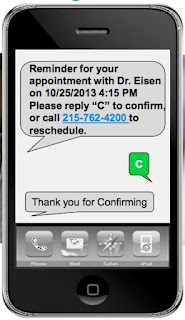Are you using email and phone to keep in touch with current customers or users? What do your open rates look like? Mobile messaging is a dominant force in 2017 communications trends and is projected to take off through 2020. Capitalizing on this, I've spent the past four years growing healthcare messaging platform, working to solve the inefficient communication problem within the healthcare industry.
To make the most of mobile, we first took an operational look at the inner workings of the healthcare industry. Our team found that through tweaking communications systems with the integration of a cloud-based messaging platform, doctors could manage their practices better and people were happier (even healthier). And to continue building in this space, our team is constantly researching the latest trends in the future of messaging. We know how powerful messaging technology is, and continues to be, in industries that are just beginning to harness the power of consumer technology.
From our own experience, here’s what you need to know about mobile messaging:
People Read Your Messages
A recent study found that the open rate of mobile messages is 98%, versus 22% for email. In general, people have multiple email addresses, spam filters, and firewalls that you have to cut through to get your messaging heard. While email apps exist on mobile devices, the app is not used as frequently nor is as intuitive as a mobile messaging app. On the other hand, 90% of people read a mobile message within the first three minutes.
Mobile messaging apps have an average rate of over 60% within the first year of usage, according to Statista. Retention rates are especially important when it comes to keeping existing customers engaged. As consumer preferences shift towards mobile messaging, business should move toward the front that has maximum viability and impact.
I also think the UX of messaging applications will be important moving forward. Industries looking to provide a solution will have to balance novelty with familiarity. Because arguably, retention rates stem from the ease of use for the individual.
Source





